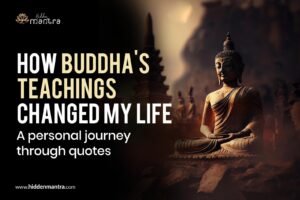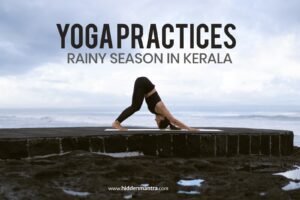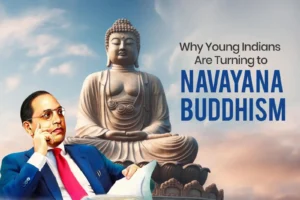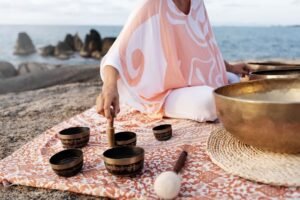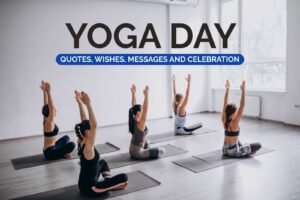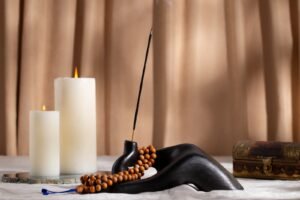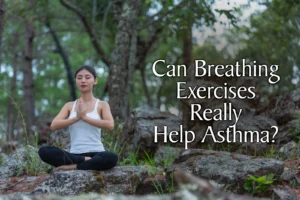Table of Contents
ToggleYoga’s pre-classical period has commenced with the establishment of the Upanishads. This period has witnessed the propagation of yoga to multiple religions as well as admirers. The detailed implications of yoga are framed in the yoga-oriented books from the pre-classical age. In fact, the Upanishads are a compilation of 200 verses which describe the innermost insight of reality which is the outcome of adoring Brahman. The main three themes explained in the Upanishads are the eventual genuineness, the motivating self and finally, its amalgamation. The teachings and philosophies imbibed in the Vedas are extended and elucidated more in the Upanishads. This blog by Hidden Mantra, introduces you to the two important yoga texts from the pre-classic period.
Two Important Yoga Texts from the Pre-Classical Period
The two important yoga texts from the pre-classical period are the Upanishads and Bhagavad Gita, and each one of them is explained below.
The Upanishads
Typically, the word Upanishad is translated as “sitting down beside.” The Sanskrit phrase can be translated into three sections: “upa” for “near,” “ni” for “down,” and “shad” for “to sit.” The intention of these writings to directly transmit truth and knowledge from instructor to pupil is thus indicated by the word’s definition. It is believed that the Upanishads, a group of Sanskrit books, include the uninterrupted teachings that the prehistoric Indian thinkers or Rishis gave to their disciples.
The Upanishads existed in the prehistoric Indian books which was formed verbally in Sanskrit somewhere between 700 and 300 BC. There are several Upanishads, in which numerous Upanishads were possibly composed by multiple authors and depicts a variety of fictional categories. The settings of Upanishads are ceremonial along with belonging to big literature named the Vedas. In addition, they indicate the beginning of a comprehensible enquiry on various old ethical questions regarding nature of self, nature of being, what happens to the self when someone dies, the origin of life, procedures of interaction, and the noble life. The Upanishads contain some primary arguments of significant ethical ideas, for instance, karma, atman (the self), brahman (final truth), yoga besides moksa (insight), samsara (worldly presence), purusa (person), prakrti (nature), as well as completely endure essential to the rational expressions of progressive backgrounds.
Since the half of the 5th century until the 2nd century BCE, thirteen Upanishads are documented. Brihadaranyaka, Taittiriya, Aitareya, Kaushitaki and Chandogya were the first five, and they were written in style with verse interwoven. Kena, Isa, Katha, Mundaka and Svetasvatara were the middle five, and they were mostly composed in verse. Prasna, Maitri, and Mandukya, the final three, were written in prose.
The Bhagavad Gita
One among the two important yoga texts from the pre-classical period is Bhagavad Gita. The Bhagavad Gita is a passage from the Mahabharata, the famous Hindu epic poetry written in Sanskrit and known as the “Song of God” in English. The dialogue is structured in the shape of a conversation between Krishna, an incarnation of the divinity Vishnu and Prince Arjuna, and it takes up episodes twenty-three to forty of Book VI from Mahabharata. It is often referred to as the Gita and was probably written in the first or second century CE.
| Also Read: Bhagavad Gita Quotes in English |
The Bhagavad-gita’s topic requires an understanding of five fundamental truths. The constitution of the living entities, or jivas, is first explained before the discipline of God. Both the controller, known as isvara, and the controlled living things, known as Jivas, exist. A living being is mad if he claims that he is not under control but rather free. The living being is under complete control, the slightest for the duration of his accustomed life. Therefore, the supreme controller, isvara, and the meticulous living things, Jivas, are the topics covered in the Bhagavad-gita. There is also discussion on prakrti (material nature), time (the length of the universe’s existence or the appearance of substantial nature), as well as karma (action). There are many diverse things happening in the cosmic manifestation. Different activities are carried out by all living things. We must discover through the Bhagavad-gita what God-the Supreme Power is, what living things are, what prakrti is, what the celestial exhibition is, how time affects it, and what the living things do.
Conclusion
In this blog my Hidden Mantra, we introduced you to the Pre-Classical era of yoga, for more details you can visit our previous blog on Pre-Classical Yoga. In addition, the blog explained the two important yoga texts from the pre-classical period the Upanishads and the Bhagavad Gita.
👉 Read: Preclassical yoga
👉 Read: Classical Yoga
FAQs:
What are two important yoga texts from the pre-classical period?
There are numerous orientations to yoga in the Upanishads, Bhagavad Gita and Mahabharata, which also mention Bhakti yoga, Jnana yoga, Raja yoga and Karma yoga. In the Gitopadesha, Krishna explains that one can achieve a higher state of consciousness if one pursues authenticity with modesty and admiration. At this time, yoga was more of a way of life than a practice involving breathing or postures.
What are the 4 periods of yoga?
“The pre-classical period, classical period, post-classical period, and modern period” are the four primary divisions of the history or tradition of yoga. The book is known as the yoga sutras in yoga history. The classical stage of yoga might not have resulted in the completion of the olden times of yoga.



